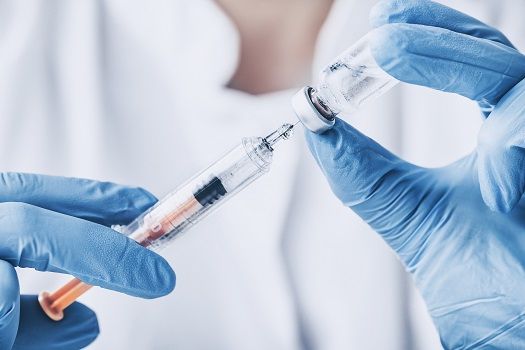Invasive Aspergillosis Recognized as Complication of Severe Influenza
Severe influenza was found to be an independent risk factor for invasive aspergillosis in the largest study conducted on the concurrent pulmonary infections.
predisposes patients to invasive pulmonary aspergillosis (IPA) and the related increased mortality, even in those who are immunocompetent, according to findings from the largest study of these concurrent infections to date.
Although severe flu is known to increase risk of bacterial superinfections, IPA has typically been attributed to prior colonization in immunocompromised hosts. Assessments conducted in the 2015-2016 influenza season, as well as in 2 seasons of 2009-11, however, revealed higher than expected incidences of probable and proven IPA in patients admitted to intensive care units (ICU) for severe flu.
"These observations suggest that influenza infection that requires ICU admission is a risk factor for invasive pulmonary aspergillosis and that incorporation of influenza as a host factor in the current diagnostic criteria might be appropriate," indicated Alexander Schauwvliegh, MD, Department of Internal Medicine, Section of Infectious Diseases, Erasmus MC University Medical Center, and colleagues.
In commentary accompanying the present study, Frederic Lamoth, MD, and Thierry Calandra, MD, of the Department of Medicine, Lausanne University Hospital, Lausanne, Switzerland, consider why the previous observations had not led to determinations of whether the fungal infection could be a complication of severe flu.
"The most probable explanation is the recent appreciation of the pathogenic role of moulds in non-haematological patients, in particular in the ICU population," they wrote.
To examine whether severe influenza is an independent risk factor, the investigators conducted a retrospective cohort study of the epidemiology and outcome of IPA in patients admitted to the ICU with severe influenza in 7 consecutive flu seasons, comparing the incidence to that in a control group of patients admitted to the ICU for severe community-acquired pneumonia.
Schauwvlieghe and colleagues identified 432 patients admitted for severe influenza and 315 admitted for community-acquired pneumonia to 1 of 7 ICUs in Belgium and the Netherlands between January 1, 2009 and June 30, 2016. All were older than 18 years of age, and had pulmonary infiltrates on imaging.
The investigators reported that IPA was diagnosed in 83 (19%) of the patients with severe flu within a median 3 days post-admission, and that the incidence was similar with influenza A or B. In patients who were immunocompromised, 32% were diagnosed with IPA, while IPA was found in 14% of those who were immunocompetent.
In the control group, only 6 (5%) of the 315 patients admitted to the ICU for community-acquired pneumonia developed IPA. The 90-day mortality in those admitted to ICU for severe influenza was 51% when there was concurrent IPA infection, and 28% in those without IPA.
Analysis confirmed severe influenza to be independently associated with IPA (aOR 5.19; 95% CI: 2.63 - 10.26). The use of corticosteroids within 4 weeks prior to ICU admission was an additional independent risk factor (aOR 1.59; 95% CI: 1.30 - 1.99) with 0.1mg/kg/day prednisone equivalent.
The number of patients with concurrent severe influenza and IPA varied in each of the 7 seasons, but the incidence remained higher than 10% in all years. The similar occurrence of IPA in patients with influenza A or B suggested to the investigators that the severity of the influenza rather than the subtype was the likely determinant.
Schauwvlieghe and colleagues speculated that respiratory epithelium damage and mucociliary clearance dysfunction with influenza could facilitate invasive Aspergillus. They also posit that an acute respiratory distress syndrome from the influenza could compromise immune response to IPA.
Lamoth and Calandra noted that severe influenza could also trigger a strong innate immune response. An induction of cytokines, including interleukin 10 which negatively affects innate and adaptive immune response, they indicate, "might predispose a patient to invasive pulmonary aspergillosis, with or without the added immunosuppressive effects of corticosteroids."
"Given the results of the present study and of similar observations, it seems reasonable to add invasive pulmonary aspergillosis to the list of influenza complication," Lamoth and Calandra wrote. "The next logical step would then be to investigate prospectively whether the administration of mold-active antifungal prophylaxis reduces the incidence of invasive pulmonary aspergillosis in patients with severe influenza infections."
The study, "Invasive Aspergillosis in Patients Admitted to the Intensive Care Unit with Severe Influenza: A Retrospective Cohort Study," was published in The Lancet Respiratory Medicine.
